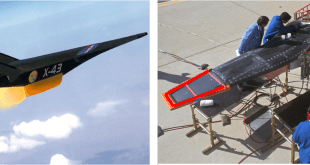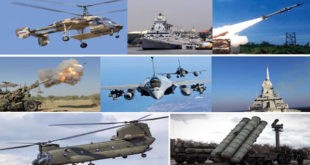In January 2024, the US Department of Defense (DoD) unveiled its inaugural National Defense Industrial Strategy (NDIS), a comprehensive roadmap aimed at fortifying the US defense industrial base amidst evolving global challenges. Spanning 59 pages, the NDIS outlines strategic imperatives to bolster resilience and innovation within the defense sector, crucial for maintaining national security in an increasingly complex geopolitical landscape.
Understanding the Strategic Shift
The release of the NDIS underscores America’s response to rising threats posed by China’s ascendant economic prowess and formidable military capabilities. Over decades, the US defense industrial complex has wielded significant influence globally, supplying advanced defense technologies worldwide. Coined by President Dwight D. Eisenhower, the term ‘military-industrial complex’ highlights both the strategic advantages and potential pitfalls of this influential sector. While pivotal in bolstering national defense during pivotal conflicts like the World Wars and the Cold War, its unchecked influence could undermine democratic governance, a concern echoed by Eisenhower in his farewell address.
Strategic Framework
In January 2024, the US Department of Defense (DoD) unveiled its inaugural National Defense Industrial Strategy (NDIS), a pivotal 59-page roadmap aimed at fortifying the US defense industrial base. This strategic blueprint underscores the imperative of bolstering domestic capabilities to confront evolving global threats while maintaining a competitive edge for US, allied, and partner forces worldwide.
Historically, US industrial prowess has been a cornerstone of its military dominance, pivotal in overcoming challenges like World War II and the Cold War. However, the post-Cold War era witnessed a ‘procurement holiday’ that led to significant reductions in military capabilities and stockpiles, culminating in the seminal 1993 meeting dubbed the “Last Supper,” where major defense contractors strategized amid shrinking defense budgets.
Today, amid rising geopolitical tensions and the economic ascendancy of nations like China, the NDIS charts a course to revitalize and expand the defense industrial ecosystem. It acknowledges critical vulnerabilities exposed by recent crises such as the COVID-19 pandemic and conflicts in Ukraine and Gaza, which highlighted dependencies on global supply chains for essential defense materials.
The NDIS is grounded in the principle that enduring industrial advantages are crucial for national security. It emphasizes the need to support allies and partners with critical capabilities to strengthen integrated deterrence. Historically, despite conflicts such as Afghanistan and Iraq, the DoD’s budget as a percentage of US GDP decreased significantly from 5.8% to 3.2% between 1985 and 2021. This reduction led to the contraction of defense-oriented companies and a downsizing of the workforce, highlighting the necessity for a resilient defense industrial ecosystem capable of dynamic production under budget constraints.
Priorities
The NDIS articulates four primary focus areas: resilient supply chains, workforce readiness, flexible acquisition strategies, and economic deterrence. It seeks to mitigate risks associated with sluggish government procurement processes and advocates for expanding production capabilities while integrating cutting-edge technologies through targeted research and development initiatives.
The NDIS outlines four long-term priorities essential for modernizing the defense industrial ecosystem:
- Resilient Supply Chains: Addressing vulnerabilities in supply chains to mitigate risks posed by overreliance on foreign sources.
- Workforce Readiness: Bridging the skills gap in the labor market to meet defense production demands and drive innovation.
- Flexible Acquisition: Reforming acquisition processes to enhance agility and responsiveness to evolving defense needs.
- Economic Deterrence: Strengthening economic foundations to support defense capabilities and counter adversarial influences.
Resilient Supply Chains and Dynamic Production
Achieving these priorities hinges on collaboration across various stakeholders, including government agencies, traditional and non-traditional defense contractors, and international allies. Key challenges include underutilization of multi-use technologies, workforce shortages exacerbated by demographic shifts, and dependence on single or adversarial foreign sources for critical materials.
Approach
The NDIS aims to catalyze transformative change by fostering a 21st-century defense industrial ecosystem. It emphasizes the integration of innovative technologies originally developed for non-military purposes, enhancing workforce capabilities, and incentivizing domestic production. Additionally, the strategy seeks to mitigate unfair trade practices and streamline procurement processes to improve readiness and reduce lead times.
Here are some key actions and strategies outlined:
- Broaden Platform Standards and Interoperability:
- Promote Open Architecture: Encouraging modular and interchangeable components to facilitate easier integration of new technologies and updates across different systems.
- Adopt Industry Standards: Utilizing existing industrial standards to simplify integration and production efforts rather than inventing new standards.
- Incentivize Interoperability and Exportability: Explicitly stating interoperability and exportability requirements in acquisition processes to broaden contractor capabilities and open new lines of business.
- Strengthen Requirements Process to Curb “Scope Creep”:
- Implementing policies for adaptive acquisition reforms that prioritize incremental development and advanced virtual modeling to manage scope changes effectively.
- Prioritize Off-the-Shelf Solutions:
- Embracing Commercial Off-the-Shelf (COTS) solutions to drive innovation, cost-effectiveness, and expand the supplier base.
- Increase Access to Intellectual Property (IP) and Data Rights:
- Using modular open systems approaches (MOSA) and negotiating specialized license agreements to mitigate IP restrictions and enhance acquisition and sustainment capabilities.
- Consider Greater Use of Contracting Strategies:
- Collaborating with Congress to modify contract authorities to align with current defense production priorities, enabling more flexible and efficient acquisition processes.
- Support Continued Acquisition Reform:
- Advancing acquisition strategies that prioritize industry health, using flexible funding and procurement mechanisms to expand production capacity.
- Update Industrial Mobilization Authorities:
- Establishing legal and regulatory conditions to ensure readiness for future mobilization needs, enhancing the DoD’s preparedness and responsiveness.
These actions underscore the DoD’s commitment to achieving a balanced approach between customization and standardization in defense acquisitions, aiming to enhance efficiency, scalability, and effectiveness across the defense industrial ecosystem. If you have more specific questions or need further elaboration on any point, feel free to ask!
AUKUS: An Industrial Base Opportunity
The AUKUS trilateral security partnership, launched in 2021, exemplifies the strategic cooperation needed to address industrial challenges. It focuses on enhancing capabilities, interoperability, and joint defense development in the Indo-Pacific region, underscoring the importance of collaborative frameworks in modern defense.
Looking ahead, the DoD aims to catalyze transformative change across the defense industrial landscape. This includes fostering a diverse and dynamic ecosystem that accommodates traditional defense contractors, new technology innovators, academia, and international partners. By modernizing procurement practices and embracing innovation, the US endeavors to maintain military superiority in an increasingly competitive global arena.
Economic Deterrence and Dynamic Production
Economic Deterrence: DoD actions to support economic deterrence focus on principles where national security, economic, technological, and defense priorities intersect. This includes building safeguards to protect a modernized defense industrial ecosystem, ensuring fair market mechanisms, and maintaining resilience against adversarial actions.
Dynamic Production: The strategy emphasizes the need for dynamic production capabilities, driven by a modernized industrial base. This involves routine assessment of progress towards priorities, with intermediate measures to track near-term actions and inform long-term goals.
Modernizing the Defense Industrial Ecosystem
Vision and Framework: The National Defense Industrial Strategy (NDIS) provides a strategic vision for revitalizing and expanding the NDIB over the next three to five years. The framework involves coordinated efforts across government and industry, emphasizing consistent funding, improved information integration, workforce training, and addressing supply chain vulnerabilities.
Call to Action: The NDIS calls for focused efforts from both public and private sectors to build and secure the industrial capability necessary to support U.S. defense. This includes promoting appropriate funding, enhancing workforce readiness, and mitigating economic threats to supply chains.
Conclusion
In conclusion, the NDIS represents a proactive step towards aligning America’s economic and defense capabilities, emphasizing agility, innovation, and resilience in the face of evolving threats.
In navigating these challenges, the DoD remains committed to enhancing the NDIB through strategic partnerships, innovative procurement practices, and workforce development initiatives. By embracing flexibility, fostering innovation, and prioritizing workforce readiness, the DoD aims to strengthen national defense capabilities and adaptability in an increasingly complex global security environment.
This strategic approach not only addresses current challenges but also sets the foundation for sustained defense readiness and capability enhancement into the future.
As the DoD continues to implement this strategy, it reinforces America’s commitment to safeguarding national security while fostering a robust defense industrial base capable of meeting future challenges head-on.
 International Defense Security & Technology Your trusted Source for News, Research and Analysis
International Defense Security & Technology Your trusted Source for News, Research and Analysis

